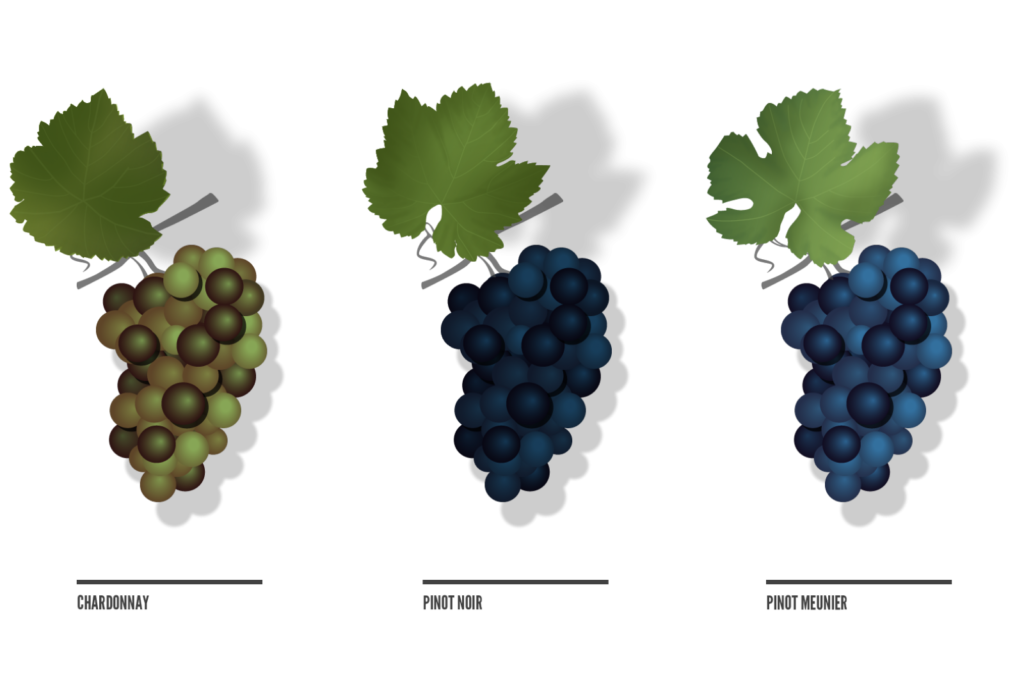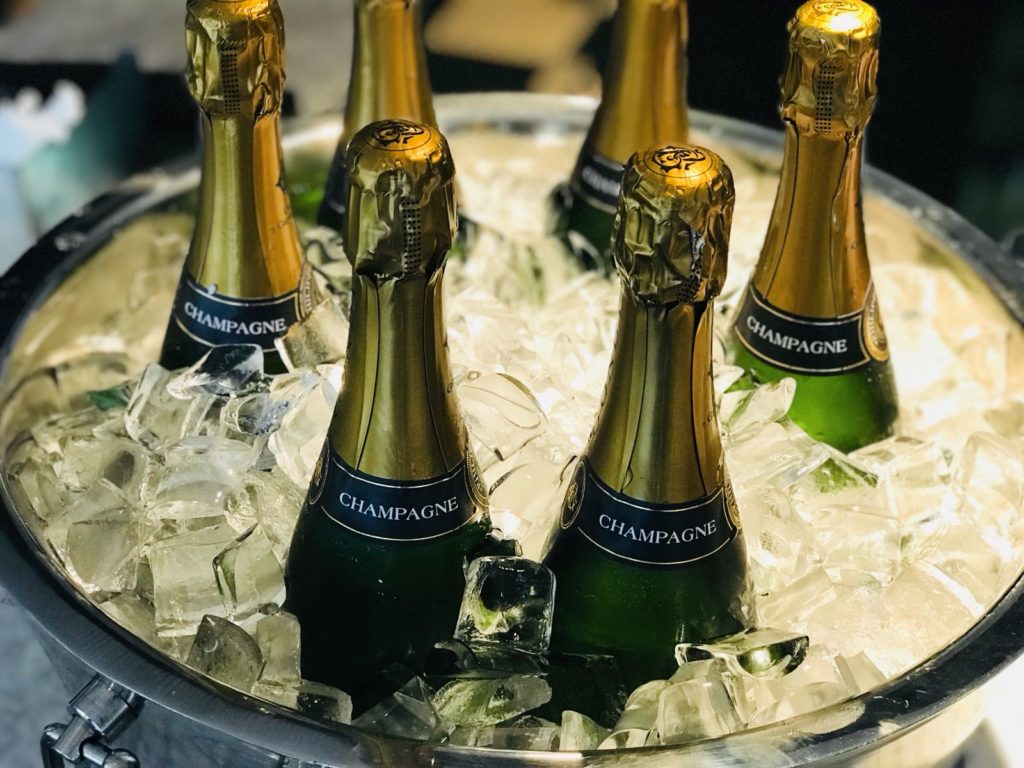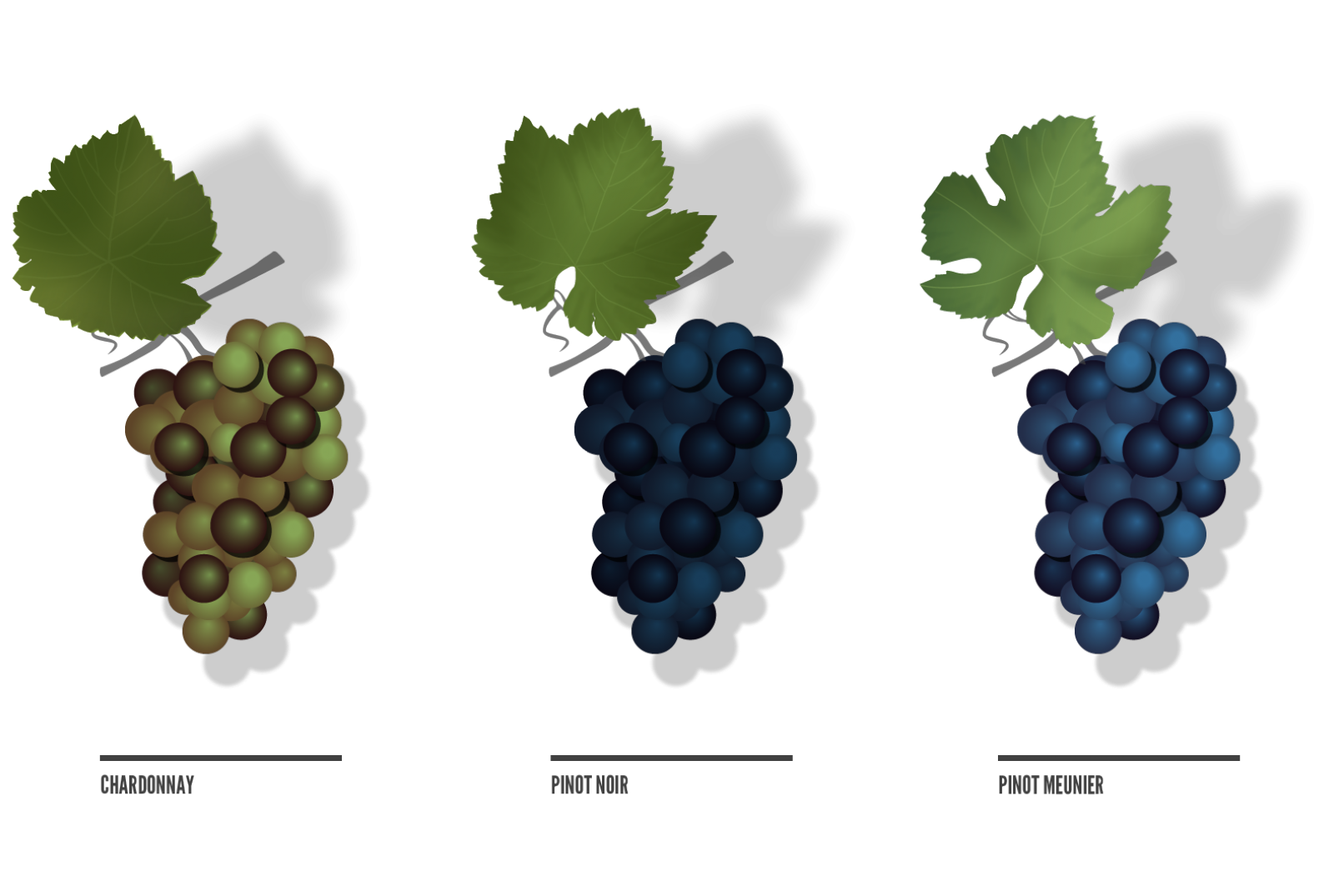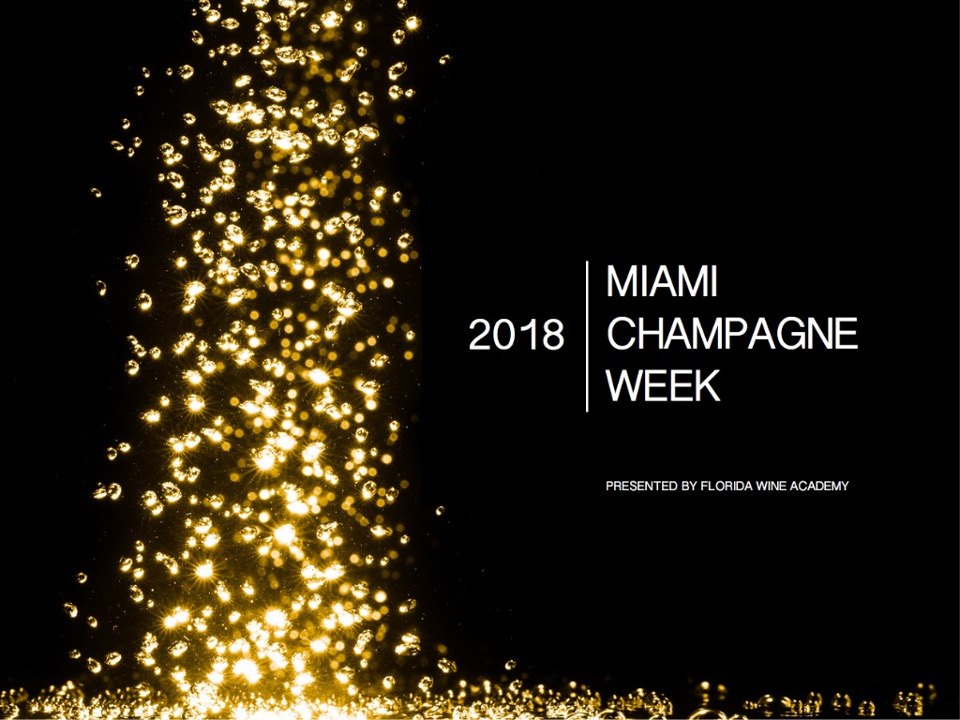What is Champagne?
Champagne is a sparkling wine that can only be called as such if it comes from the Champagne region in France. Sparkling wines are made all over the world, but true Champagne comes from the place that shares its name. These wines are truly unique because the grapes express the specific geography, soil and climate of the region. The French call this “terroir”.
 There are three principal grapes used in the production of Champagne: Chardonnay, Pinot Noir, and Pinot Munier. Typically these are blended together, and blending often occurs between vineyard sites and vintages.
There are three principal grapes used in the production of Champagne: Chardonnay, Pinot Noir, and Pinot Munier. Typically these are blended together, and blending often occurs between vineyard sites and vintages.
Traditional method
All Champagnes are made using the traditional method, or methode champenoise, which means the second fermentation takes place in the bottle by adding the liqueur de tirage, a mixture of wine, yeast and sugar. During this period, which can last up to eight weeks, the yeasts convert the additional sugars into alcohol and carbon dioxide. Wines are stored on their sides during this time and the dead yeasts (called lees) remain in the bottle, giving the wine flavor and texture. The wines remain this way for a minimum of 12 months until it is time to remove the less through the processes of riddling and disgorgement. The wines are then topped off with a liqueur d’expedition, a mixture of sugar and wine that determines the end style of Champagne.
 How sweet is Champagne?
How sweet is Champagne?
Brut Champagne, for example, has a total of 0-12 g/L of residual sugar after dosage and is one of the drier styles of Champagne. The wines are secured with a cork and wire cage and aged in bottle before release. Non-vintages are cellared for a total of 15 months while vintages require 36 months. Almost all Champagnes benefit from further aging before release, and many producers choose to do so.
Join us for the Miami Champagne Week 2018 to learn more about champagne. You can register for events here.






